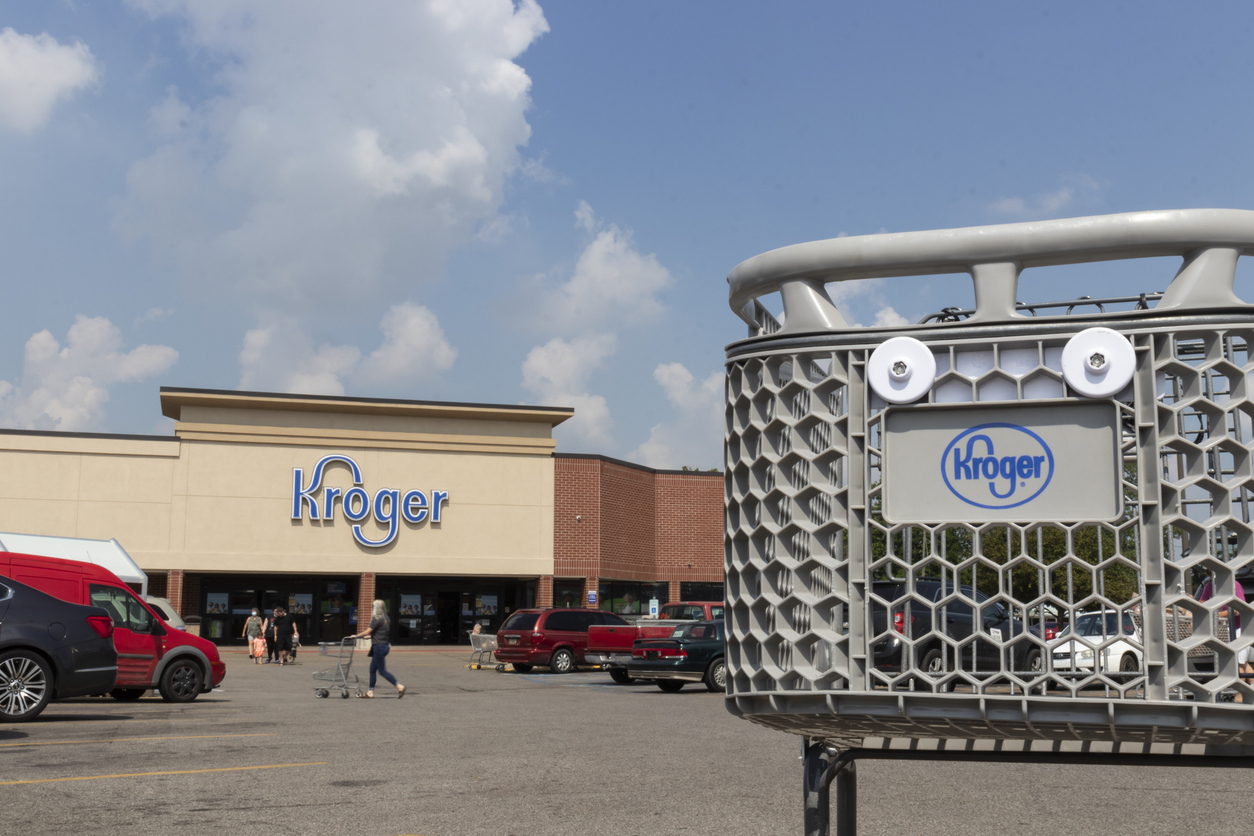How Kroger’s investor relations, PR teams break down comms silos
The national grocery store chain has unified messaging across all its target audiences.

Investor relations and public relations have long been treated as distinct functions. But as businesses face increasing scrutiny from stakeholders, keeping them separate can lead to misalignment, confusion and reputational damage. Most importantly, it could affect the bottom line.
That makes a strong relationship between investor relations and PR essential.
“I don’t think companies can effectively have these two functions operate in a vacuum,” said Erin Rolfes, director of corporate communications for The Kroger Co. “If they do, they’ll miss out on the ‘secret sauce’ that comes from teams working well together.”
Rolfes, along with Kroger’s group VP of corporate affairs, Keith Dailey, works closely with Rob Quast, VP of investor relations, and his team.
They don’t have a set schedule but meet regularly to discuss earnings calls, press releases and major news about the national grocery store chain.
“Anything we communicate externally, whether for investors, employees or consumers, can influence how the market perceives us,” said Quast, who reports to the CFO. “That’s why coordination between these teams is crucial.”
Crafting a unified message
Historically, Kroger’s IR function had a communications background and sat within PR. About five years ago, the role moved to finance, shifting the focus to candidates with financial expertise, such as a CFA or CPA.
Quast noted that they’d run into some challenges bringing in communications professionals and teaching them finance versus the other way around.
That shift made relying on communications more important than ever. It also brought the teams closer.
Today, the pair has a close partnership, with Rolfes calling Quast her “go-to contact” whenever something comes up.
“I reach out to him to discuss how we’re approaching the situation and how to communicate it,” Rolfes said. “We need to ensure external, non-investor audiences understand the message while also making sure the investor audience has the information they need to keep the market stable and maintain confidence in Kroger as a strong company.”
Quast admitted that there were some bumps along the road to building that relationship. He attributed that to not having as much direct communication on certain matters. They’ve since found it much easier to explain concerns, rationale or strategy in person or over the phone versus an email exchange, he said.
“A (written) sentence can be interpreted one way by one audience and completely differently by another,” he said. “Spending five minutes on the phone or having a quick meeting leads to better outcomes.”
Rolfes and Dailey help prepare for earnings calls and also attend them, as does the company’s VP of communications. Quast’s team prepares the CEO and CFO to answer investor or board questions. PR helps prep meetings, script reviews and press releases to ensure consistent messaging.
“Our team takes pride in representing the investor’s perspective,” Quast said. “But Erin and Keith bring expertise I don’t have in considering how the message will be received by associates or customers. This collaboration helps us deliver a well-rounded message.”
Avoiding surprises
Whether it’s a press release for a new product launch or a major financial disclosure, PR and IR ensure all key audiences are informed before anything goes public.
For technical releases, like earnings or shareholder communications, IR leads the way, then collaborates with PR to shape the final message. For shareholder communications, PR typically starts the draft, and IR provides feedback to ensure it meets investor needs.
Kroger doesn’t have a rigid sequence for messaging approvals. But before anything goes out, the comms, IR, legal and the executive team will have seen or touched it in some way.
“It’s a give-and-take situation,” Rolfes said. “The goal is always to ensure both sides are heard.”
Quast highlighted the importance of staying attuned to market sentiment, noting that recent volatility has forced his team to adopt an “always on” mindset.
Kroger relies heavily on customer data from its separate consumer analytics division, 84.51 – the name represents the longitudinal coordinates of its headquarters in Cincinnati – to shape both IR and PR messaging. While PR focuses on reputation, IR looks at sales figures.
“It’s important for us to understand how customers view shopping with Kroger,” Quast said. He frequently shares analyst notes with Rolfes’ team to provide investor insights.
A recent example was egg prices. Kroger began focusing on messaging in December when supplier costs increased.
From a PR perspective, instead of making projections, Kroger directed reporters to retail trade associations with a broader industry view. But the topic also led to investor questions about inflation, requiring additional context.
Anticipating those questions, the IR/PR teams included eggs in its quarterly earnings call script this month to proactively shed light on why they expect inflation to be 1.5% to 2.5%, which does not include the effects from tariffs announced earlier this week.
“Aside from eggs, our food-at-home inflation has remained stable,” Quast said. “We felt it was important to clarify this to investors.”
“The market is as dynamic as ever, so transparency and open communication are critical.”
Principles for effective communication
Kroger has faced its share of controversy over the past year. On Tuesday, the company announced a counterclaim it filed against Albertsons over their failed merger. Kroger is also dealing with the fallout from the unexpected resignation of its longtime CEO on March 3 for unspecified reasons.
In both instances, the IR and PR teams connected with all internal stakeholders – the board, the executive team and employees – to ensure they were aware of what’s being said.
“We also make sure to hold the line by sticking to what we’ve said publicly in the press release, emphasizing that we don’t have anything else to add at this time,” Rolfes said.
In sensitive moments, the entire team, including IR, views the press release or media statement as the “one source of truth,” Quast said.
“Everything stems from that,” he said. “Those communications include key topics geared toward all audiences: investors, media, associates and customers. We weave those into the press release so we don’t have to go back and reshape the message later.”
“If we think it’s important enough to reach the right audiences, it needs to be in the press release,” Quast added. “That’s our rule of thumb.”
Quast and Rolfes worked together on Tuesday’s announcement to ensure alignment between teams.
“Sometimes we laugh at how much time we spend on wording, but it makes sense because the press release is such an important document,” Quast said.
Of course, follow-up Q&A and press inquiries still require preparation. IR and PR teams spend significant time anticipating those questions.
“It’s about investing the time,” Rolfes said. “Like any relationship, it’s a human connection, and it’s important to spend time together to understand where the other person is coming from, what their goals are and how we can work best together.”
Communication takeaways
- IR and PR are stronger together – Misalignment can shake market confidence; collaboration keeps messaging clear and credible.
- Skip the email, make the call – Even five minutes on the phone can prevent costly misinterpretations between collaborators.
- Data shapes perception – Customer insights and investor sentiment must work in tandem to tell a complete story.
- Find your ‘one source of truth’ – If it’s worth saying, it belongs in the official statement. Both PR and IR teams should refer back to the statement and not deviate from it.
Casey Weldon is a reporter for PR Daily. Follow him on LinkedIn.







